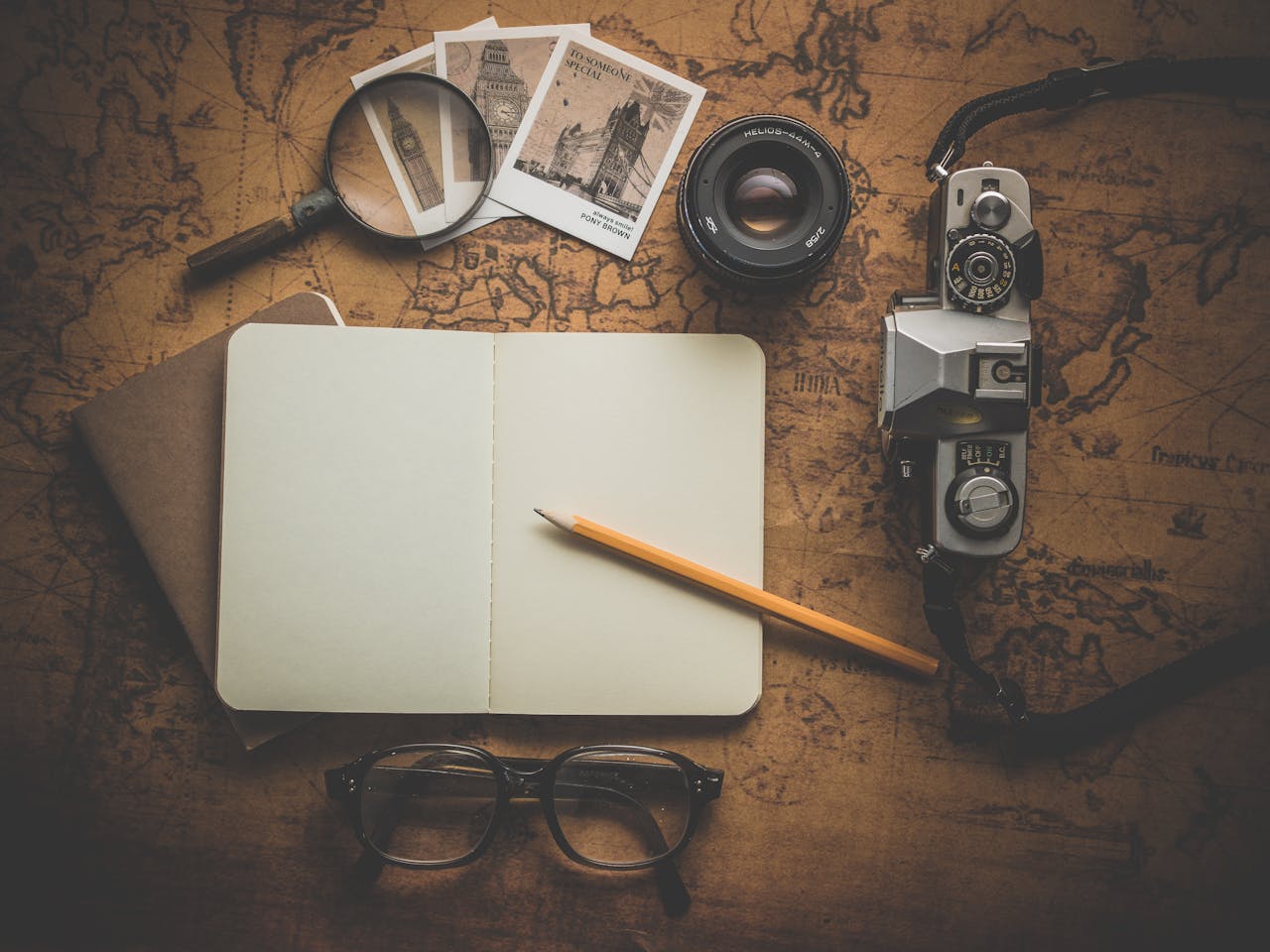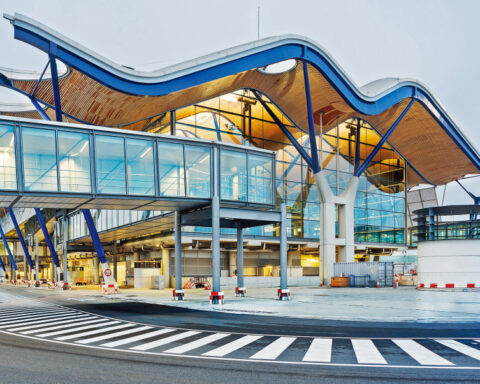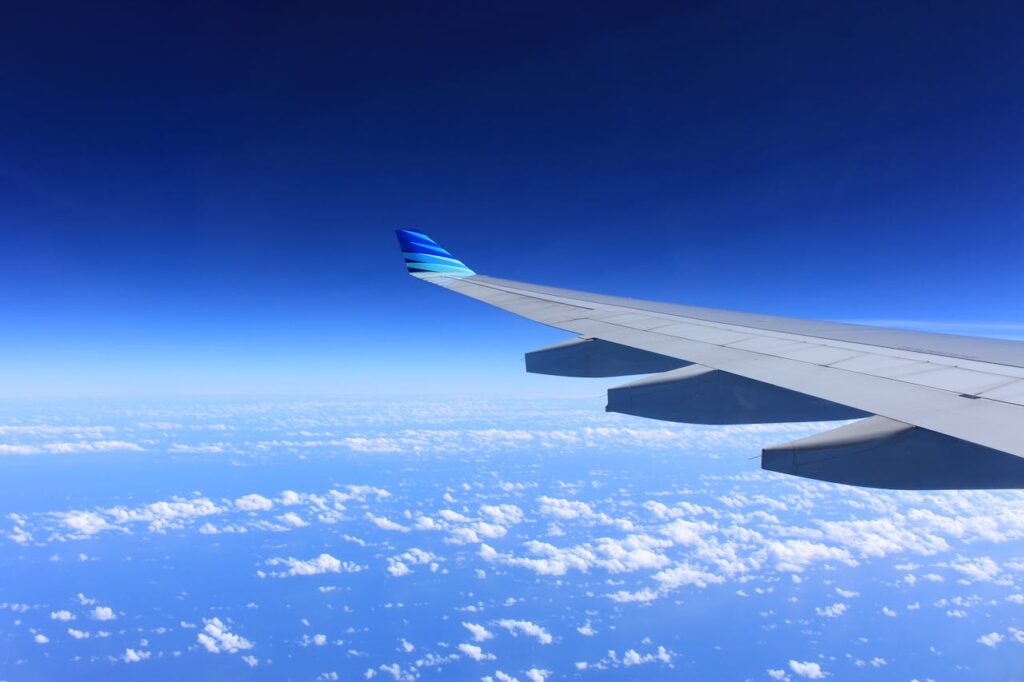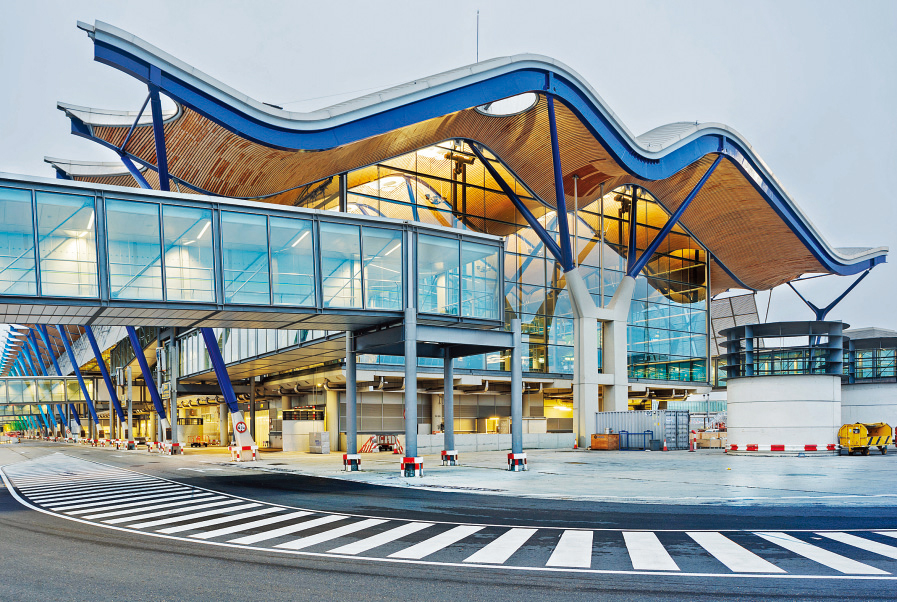1. Research Your Destination
Before you embark on your solo adventure, thoroughly research your destination. Understand the local customs, culture, and language to ensure a smooth and enjoyable experience. Here are some of the following things to consider:
- Start with Reliable Sources: Begin your research by exploring reliable sources such as travel guidebooks, reputable travel websites, and official tourism websites of the destination. These sources provide comprehensive information on attractions, accommodations, transportation, and local customs.
- Read Travel Blogs and Reviews: Seek insights from fellow travelers by reading travel blogs, forums, and review platforms like TripAdvisor or Yelp. Real-life experiences shared by other travelers can offer valuable tips, hidden gems, and practical advice for your trip.
- Watch Travel Videos: Visualize your destination by watching travel videos on platforms like YouTube or Vimeo. Travel vlogs, documentaries, and virtual tours provide a firsthand look at attractions, local cuisine, and cultural experiences, helping you get a sense of what to expect.
- Check Social Media: Follow travel influencers, tourism boards, and local businesses on social media platforms like Instagram, Facebook, and Twitter. Social media offers up-to-date information, insider tips, and stunning visuals that can inspire your itinerary and help you discover off-the-beaten-path gems.
- Consult Maps and Itineraries: Use online maps and itinerary planners to map out your trip and identify points of interest. Google Maps, for example, allows you to explore attractions, restaurants, and accommodations in specific areas, while travel itinerary planners like TripIt help organize your schedule efficiently.
- Learn Basic Phrases: Familiarize yourself with basic phrases in the local language, such as greetings, thank you, and please. Language learning apps like Duolingo or Babbel can help you pick up essential phrases and improve communication with locals.
- Check Visa Requirements: Verify visa requirements and entry regulations for your destination, especially if you’re traveling internationally. Visit the official website of the destination country’s embassy or consulate to obtain accurate information regarding visa applications and entry restrictions.
- Consider Local Customs: Research local customs, etiquette, and cultural norms to avoid inadvertently causing offense or disrespecting local traditions. Understanding social norms, dress codes, and dining etiquette can help you blend in seamlessly with the local community.
- Budget and Currency: Determine your budget and familiarize yourself with the local currency and exchange rates. Research typical costs for accommodations, meals, transportation, and activities to create a realistic budget for your trip.
- Safety and Health Precautions: Prioritize safety and health by researching potential risks, safety tips, and health precautions for your destination. Check travel advisories, vaccination requirements, and health recommendations from reputable sources such as the Centers for Disease Control and Prevention (CDC) or the World Health Organization (WHO).
2. Stay Connected
Keep loved ones informed of your travel plans and whereabouts. Share your itinerary with family or friends and stay in touch regularly, especially when exploring remote areas.
- International Roaming: Check with your mobile carrier about international roaming options. Some carriers offer affordable international roaming plans that allow you to use your phone abroad for calls, texts, and data without incurring exorbitant fees.
- Local SIM Cards: Consider purchasing a local SIM card upon arrival at your destination. Local SIM cards often provide better coverage and lower rates for calls, texts, and data compared to international roaming.
- Portable Wi-Fi Devices: Rent or purchase a portable Wi-Fi device, also known as a pocket Wi-Fi or MiFi device. These devices allow you to connect multiple devices to a secure Wi-Fi network, providing internet access on the go without relying on cellular networks.
- Public Wi-Fi: Use public Wi-Fi networks available in hotels, cafes, restaurants, and tourist attractions. However, exercise caution when connecting to public Wi-Fi networks, as they may not be secure. Avoid accessing sensitive information or making online transactions on unsecured networks.
- Offline Maps and Guides: Download offline maps and travel guides to your smartphone or tablet before your trip. Offline maps allow you to navigate without an internet connection, while offline travel guides provide valuable information about attractions, restaurants, and activities.
- Messaging Apps: Use messaging apps like WhatsApp, Facebook Messenger, or Signal to stay in touch with family and friends. These apps allow you to send messages, make voice and video calls, and share photos and videos over Wi-Fi or cellular data networks.
- Email Access: Set up access to your email account on your mobile device or laptop to stay connected with work or important communications. Check email periodically using Wi-Fi connections or data roaming, if available.
- Social Media Updates: Share your travel experiences and stay connected with friends and followers on social media platforms like Instagram, Facebook, Twitter, and Snapchat. Post photos, videos, and updates about your adventures to keep everyone informed and engaged.
- Emergency Contacts: Save emergency contact numbers, including local emergency services, embassy or consulate information, and your accommodation’s contact details, in your phone or travel journal. Be prepared to contact these resources in case of emergencies or unforeseen situations.
- Backup Communication: Carry a backup communication device such as a prepaid phone card or satellite phone for emergencies or situations where cellular or Wi-Fi networks are unavailable.
3. Pack Light
Traveling solo means you’re responsible for managing your luggage on your own. Pack light, versatile clothing and essential items to make moving around easier and more convenient.
- Make a Packing List: Start by making a packing list to prioritize essential items and avoid overpacking. Include only items that are necessary for your trip and consider versatile clothing pieces that can be mixed and matched.
- Choose the Right Luggage: Select lightweight luggage or travel backpacks that meet airline size and weight restrictions. Opt for compact, durable bags with multiple compartments for efficient packing and organization.
- Pack Multipurpose Clothing: Pack clothing items that can be worn in multiple ways and for various occasions. Choose versatile pieces like neutral-colored tops, bottoms, and outerwear that can be dressed up or down depending on the situation.
- Limit Shoes: Shoes can take up a significant amount of space in your luggage. Limit the number of shoes you pack by selecting versatile pairs that can be worn for different activities. Consider comfortable walking shoes, sandals, and one pair of dress shoes if necessary.
- Utilize Packing Cubes or Compression Bags: Use packing cubes or compression bags to maximize space and keep your belongings organized. Packing cubes help separate clothing items and compress them to create more room in your luggage.
- Minimize Toiletries: Pack travel-sized toiletries or consider purchasing items like shampoo, conditioner, and body wash at your destination to save space and weight in your luggage. Use multipurpose products whenever possible to reduce the number of items you need to pack.
- Plan for Laundry: If you’re traveling for an extended period, plan for laundry along the way. Pack a small travel-size laundry detergent and a portable clothesline for washing essentials during your trip. Alternatively, take advantage of laundry services available at accommodations or local laundromats.
- Limit Accessories: Minimize accessories like jewelry, belts, and hats to save space in your luggage. Choose a few key pieces that can elevate your outfits without adding unnecessary bulk.
- Wear Bulky Items: Wear bulky or heavier items like jackets, sweaters, and boots while traveling to save space in your luggage. Layering clothing items allows you to adjust to changing temperatures and frees up room for other essentials.
- Edit and Reevaluate: Before finalizing your packing, review your items and edit out any unnecessary or redundant items. Reevaluate your packing list to ensure you’re only bringing items that are essential and practical for your trip.
4. Safety First
Prioritize safety at all times. Be aware of your surroundings, trust your instincts, and avoid risky situations. Research safe accommodations and transportation options, especially when arriving in new cities or countries.
- Research Safety: Before your trip, research the safety situation in your destination. Check travel advisories and government websites for up-to-date information on potential risks, safety concerns, and travel warnings.
- Stay Informed: Stay informed about local news, events, and developments in your destination. Monitor local media outlets, follow updates from reputable news sources, and pay attention to any security alerts or announcements.
- Share Your Itinerary: Share your travel itinerary, including details of your accommodations, transportation, and activities, with trusted family members or friends. Provide them with copies of important documents such as your passport, travel insurance, and emergency contacts.
- Register with Embassy: Register with your country’s embassy or consulate in the destination country. Many governments offer traveler registration services that provide assistance in emergencies, natural disasters, or civil unrest.
- Stay Alert: Remain vigilant and aware of your surroundings at all times. Be cautious of pickpockets, scams, and potential dangers, especially in crowded tourist areas, public transportation, and unfamiliar neighborhoods.
- Secure Your Belongings: Keep your belongings secure and valuables out of sight. Use anti-theft bags, money belts, and secure pockets to protect your passport, money, credit cards, and electronic devices from theft or loss.
- Use Safe Transportation: Choose safe and reputable transportation options for getting around. Use licensed taxis, reputable ride-sharing services, or public transportation systems recommended by locals or trusted sources.
- Avoid Risky Behavior: Avoid risky behavior and activities that could compromise your safety. Exercise caution when participating in adventure sports, outdoor activities, or nightlife, and adhere to local laws and regulations at all times.
- Stay Connected: Stay connected with family, friends, or fellow travelers while exploring. Check in regularly with loved ones, share your whereabouts, and establish a communication plan in case of emergencies.
- Trust Your Instincts: Trust your instincts and intuition. If something feels unsafe or uncomfortable, remove yourself from the situation and seek assistance from trusted sources such as local authorities, hotel staff, or fellow travelers.
- Emergency Preparedness: Be prepared for emergencies by carrying essential items such as a first aid kit, emergency contact information, medications, and important documents. Familiarize yourself with emergency procedures and know how to access medical care or assistance if needed.
5. Solo-Friendly Accommodations
Choose accommodations that cater to solo travelers, such as hostels with communal areas or guesthouses with social activities. These places offer opportunities to meet fellow travelers and make new friends.
- Safety and Security: Prioritize accommodations located in safe and well-lit areas, especially if you’ll be arriving late at night or exploring the area alone. Look for properties with secure entrances, 24-hour reception, and surveillance cameras for added peace of mind.
- Solo Traveler-Friendly Amenities: Choose accommodations that cater to solo travelers by offering amenities such as single rooms, communal areas, social events, and organized activities. Hostels, guesthouses, and boutique hotels often provide solo-friendly amenities that encourage interaction and camaraderie among guests.
- Positive Reviews from Solo Travelers: Check online reviews from solo travelers who have stayed at the accommodation. Look for feedback on the property’s atmosphere, cleanliness, staff friendliness, and solo traveler-friendly features. Websites like Hostelworld, Booking.com, and TripAdvisor allow you to filter reviews based on traveler type, including solo travelers.
- Social Atmosphere: Seek accommodations with a social atmosphere conducive to meeting other travelers. Look for hostels or guesthouses with communal kitchens, lounges, and outdoor spaces where guests can socialize, exchange travel tips, and form friendships.
- Solo-Friendly Room Options: Choose accommodations that offer a variety of room options suitable for solo travelers. Look for single rooms, dormitory-style bunk beds, or pod-style capsules that provide privacy, comfort, and affordability for solo guests.
- Flexible Booking Policies: Opt for accommodations with flexible booking policies that allow changes or cancellations without penalties. Solo travel plans may change unexpectedly, so having the flexibility to adjust your reservation can be invaluable.
- Central Location: Select accommodations located in central or well-connected areas close to public transportation, attractions, restaurants, and amenities. A central location allows you to easily explore the destination on foot or by public transit, minimizing transportation costs and maximizing your time.
- Budget-Friendly Options: Consider your budget when choosing accommodations and look for options that offer good value for money. Solo travelers may benefit from budget-friendly accommodations such as hostels, guesthouses, homestays, or rental apartments that offer competitive rates without sacrificing comfort or safety.
- Local Recommendations: Seek recommendations from local tourism offices, online travel communities, or social media groups dedicated to solo travel. Locals and experienced travelers can provide valuable insights and recommendations for solo-friendly accommodations that may not be widely known.
- Personal Preferences: Consider your personal preferences and travel style when selecting accommodations. Whether you prefer a quiet retreat, a lively social scene, or a cozy home-like environment, choose accommodations that align with your preferences and enhance your overall travel experience.
6. Stay Flexible
Embrace spontaneity and stay flexible with your plans. Solo travel allows you the freedom to change your itinerary on a whim, so take advantage of unexpected opportunities and experiences.
- Open-Minded Attitude: Embrace a mindset of flexibility and openness to new experiences. Be willing to adjust your plans, try new activities, and explore unexpected opportunities that arise during your travels.
- Loose Itinerary: Avoid over-planning your trip and maintain a loose itinerary that allows for spontaneity and exploration. Instead of scheduling every minute of your day, leave room for unplanned adventures and serendipitous discoveries.
- Alternative Routes and Modes of Transportation: Be prepared to take alternative routes or modes of transportation if your original plans are disrupted. Research backup options such as alternate bus routes, trains, or ridesharing services to reach your destination efficiently.
- Weather Contingencies: Keep an eye on weather forecasts and be prepared to adjust your activities or plans accordingly. Have a list of indoor attractions, museums, or cafes to visit in case of inclement weather, and be flexible with outdoor activities based on changing weather conditions.
- Last-Minute Accommodations: Stay flexible with your accommodation arrangements by keeping options open for last-minute bookings. Use hotel booking apps or websites to find available accommodations at short notice, especially if your travel plans change unexpectedly.
- Spontaneous Excursions: Take advantage of spontaneous excursions or day trips that arise during your travels. Be open to invitations from fellow travelers, locals, or tour operators for impromptu activities or outings.
- Flexible Dining Options: Explore a variety of dining options and be open to trying local cuisine at different eateries. Avoid rigid dining schedules and embrace the opportunity to sample street food, dine at hole-in-the-wall restaurants, or join food tours for a taste of authentic flavors.
- Adapt to Cultural Differences: Respect and adapt to cultural differences you encounter while traveling. Be mindful of local customs, traditions, and social norms, and adjust your behavior or attire accordingly to show respect for the host culture.
- Stay Connected: Stay connected with travel apps, maps, and communication tools that allow you to adjust your plans on the go. Use navigation apps to find alternative routes, messaging apps to communicate with travel companions or accommodations, and translation apps to overcome language barriers.
- Positive Mindset: Maintain a positive mindset and embrace the unexpected twists and turns of travel. View challenges as opportunities for growth, learning, and adventure, and remember that flexibility is key to making the most of your travel experiences.
7. Connect with Locals
Interact with locals to gain insights into the destination’s culture and lifestyle. Engage in conversations, attend local events or workshops, and try authentic cuisine recommended by residents.
- Learn Basic Phrases: Learn a few basic phrases in the local language, such as greetings, thank you, and please. Locals appreciate the effort and it can help break the ice when initiating conversations.
- Engage in Small Talk: Strike up conversations with locals in shops, markets, restaurants, and public transportation. Ask for recommendations, inquire about local customs or traditions, and show genuine interest in their culture.
- Participate in Local Activities: Join local tours, workshops, or cultural events to immerse yourself in the community. Whether it’s a cooking class, dance performance, or traditional festival, participating in local activities provides opportunities to interact with residents and learn about their way of life.
- Stay with Locals: Consider staying with locals through homestays, guesthouses, or vacation rentals. Staying in accommodations run by locals allows you to interact with them on a daily basis, share meals, and learn about their culture firsthand.
- Visit Local Hangouts: Venture beyond tourist hotspots and explore local neighborhoods, cafes, bars, and markets frequented by residents. These authentic establishments provide opportunities to meet locals in their natural environment and engage in meaningful conversations.
- Volunteer: Volunteer with local organizations or community projects to give back to the community while connecting with locals. Whether it’s teaching English, environmental conservation, or community development, volunteering allows you to build relationships and make a positive impact.
- Ask for Recommendations: Seek recommendations from locals for off-the-beaten-path attractions, hidden gems, and authentic dining spots. Locals often know the best-kept secrets of their hometown and are happy to share their favorite places with visitors.
- Respect Local Customs: Show respect for local customs, traditions, and etiquette when interacting with locals. Be mindful of cultural differences, dress modestly when appropriate, and adhere to social norms to foster positive interactions.
- Be Approachable: Smile, make eye contact, and approach locals with an open and friendly demeanor. Show genuine curiosity and enthusiasm for learning about their culture, and be receptive to conversations initiated by others.
- Express Gratitude: Express gratitude and appreciation for the hospitality and kindness shown by locals. A simple thank you in the local language or a small gesture of appreciation goes a long way in building rapport and fostering meaningful connections.
8. Use Technology Wisely
Leverage technology to enhance your solo travel experience. Use navigation apps to navigate unfamiliar areas, language translation apps to communicate with locals, and travel safety apps to stay informed about local risks.
- Download Offline Maps: Before your trip, download offline maps of your destination using apps like Google Maps or Maps.me. Offline maps allow you to navigate without an internet connection, making it easier to explore unfamiliar areas and avoid getting lost.
- Use Navigation Apps: Use navigation apps to plan routes, find directions, and locate nearby attractions, restaurants, and amenities. Apps like Google Maps, Waze, and Citymapper provide real-time navigation and transit information to help you navigate efficiently.
- Language Translation Apps: Download language translation apps like Google Translate or Microsoft Translator to overcome language barriers while traveling. These apps allow you to translate text, speech, and even images in real-time, making communication with locals easier and more effective.
- Travel Safety Apps: Install travel safety apps that provide valuable information and assistance in emergencies. Apps like TripIt, TravelSafe, or SafeTravels offer features such as emergency contacts, medical assistance, safety alerts, and embassy information to help you stay safe while traveling.
- Stay Connected with Wi-Fi: Take advantage of free Wi-Fi hotspots available in hotels, cafes, restaurants, and public spaces to stay connected without incurring roaming charges. Use Wi-Fi connections to access email, messaging apps, social media, and internet browsing on your smartphone or tablet.
- Purchase Local SIM Cards: Consider purchasing a local SIM card upon arrival at your destination for affordable data and calling rates. Local SIM cards allow you to stay connected on the go, make local calls, and access mobile data for navigation, communication, and internet browsing.
- Use Ride-Sharing Apps: Use ride-sharing apps like Uber, Lyft, or Grab to book safe and reliable transportation in unfamiliar cities. Ride-sharing apps provide convenient options for getting around, with upfront pricing, GPS tracking, and cashless payment methods.
- Stay Organized with Travel Apps: Use travel apps to stay organized and manage your itinerary, bookings, and expenses. Apps like TripIt, Kayak, or Expedia allow you to consolidate travel bookings, receive real-time flight updates, and access travel information offline.
- Protect Your Devices: Keep your electronic devices safe and secure while traveling by using password protection, device encryption, and remote tracking features. Install security software, enable automatic updates, and avoid connecting to unsecured Wi-Fi networks to protect against cyber threats.
- Respect Privacy and Local Laws: Respect privacy and local laws when using technology abroad. Be mindful of photography restrictions, data privacy regulations, and internet censorship in certain countries, and avoid posting sensitive or controversial content online.
9. Trust Your Instincts
Trust your instincts and listen to your inner voice. If something doesn’t feel right, remove yourself from the situation and seek assistance from trusted sources, such as local authorities or fellow travelers.
10. Embrace Solo Time
Finally, embrace solo time as an opportunity for self-discovery and personal growth. Enjoy moments of solitude to reflect, recharge, and fully immerse yourself in the journey.








